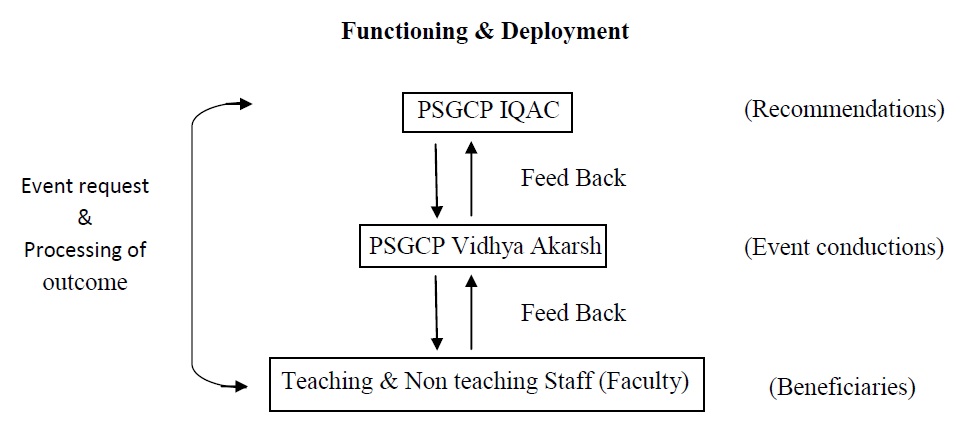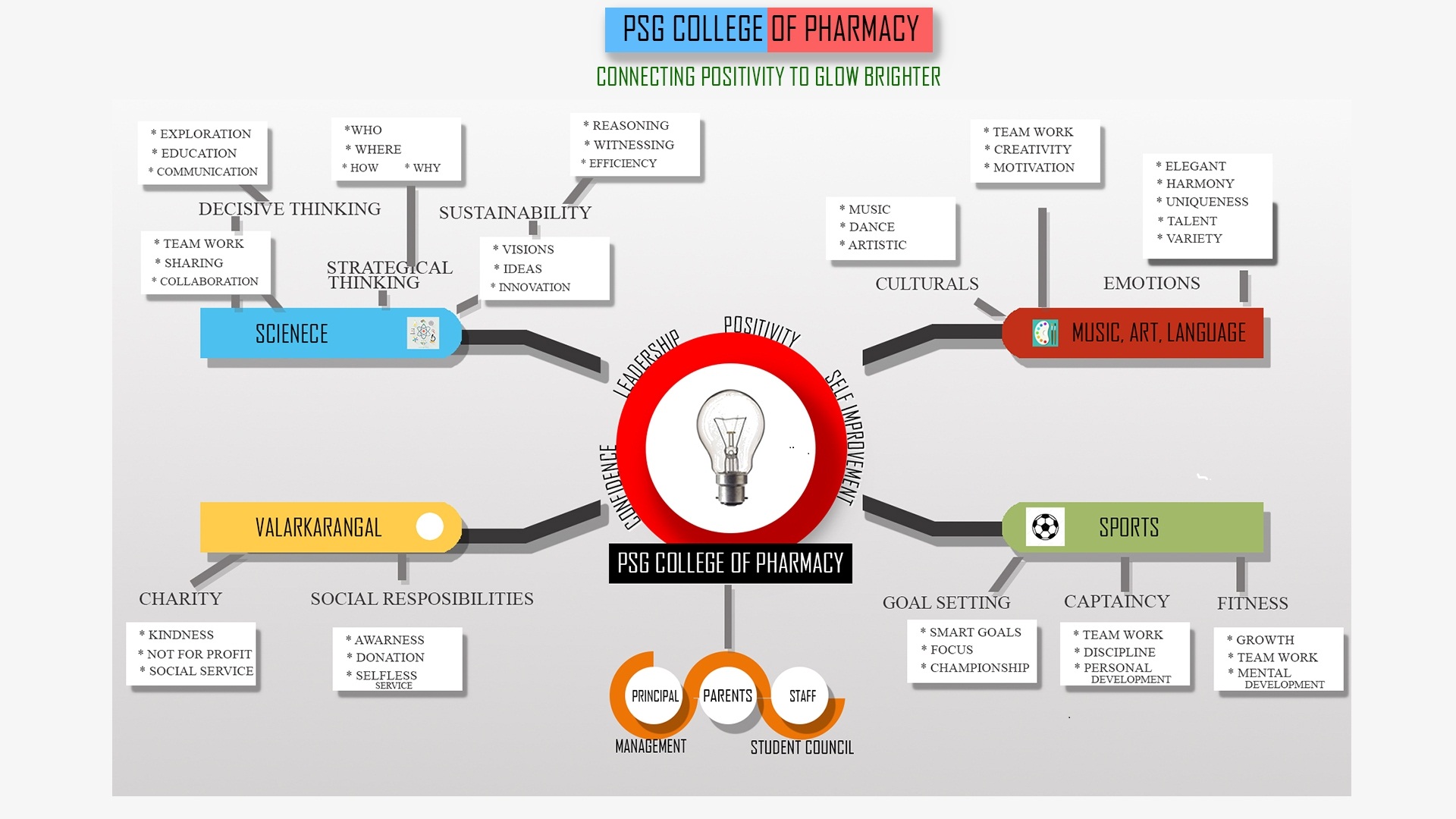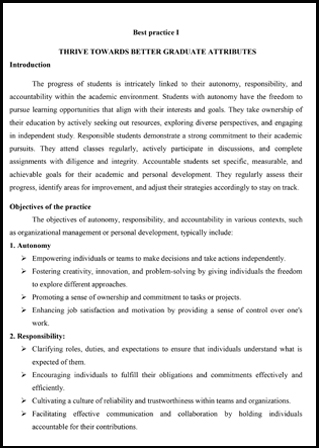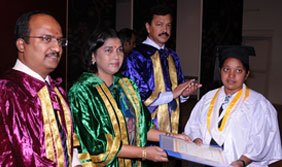Best Practices
BEST PRACTICES 2023-2024
BEST PRACTICES 2022-2023
BEST PRACTICE -I (2021-2022)
TITLE
HOW TO BREAK IT...!INTRODUCTION
In the virtue of capacity building programs and promoting leadership qualities in the college, senior students came forward to initiate a program called “How to break it” to connect all students in a healthy manner being in a new environment after 18 months refreshing the relationship will be overwhelming and intimidating. This may especially be true for first-year students. This program being a social activity, helped students to know each other, create bond, connect on a personal level, build rapport and to control of gadgets and monitoring behavior. Building relationships among junior and senior students, faculty is a key part of the college experience. A variety of icebreaker events were conducted by the student leaders made the candidates feel welcome and at ease. These seniors team has been called as SENATORS. This 100 days project has been designed to unlock the COVID mindset & bring back the mood of the students’ community by knowing each other after a break of 18 months.
OBJECTIVE OF THE PROGRAMME
- To improvise and lasting relationship between seniors and juniors.
- To increase social and communication skills among students.
- To create an opportunity for interaction through skills, organizing and carrying out games and service projects.
- To have a comfortable and welcoming environment.
DESCRIPTION
The Senators designed the project and collected the information regarding the barriers and obstacles to interact with other class students. The protocols were framed so that the interaction among the students can be improved. The students were divided into 26 groups and every month they were regrouped to interact & meet new members. The groups were asked to perform different team events including games, creative activities, garden work, tree plantations and so on. The programs were scheduled in the month of February, March & April 2022.
ADVANTAGES
- Creates good relationship between seniors, juniors and mentors.
- Equitable treatment among individuals without any discrepancy.
- Improved soft skills of the students were observed
CHALLENGING OBSTACLES AND BARRIERS
- Conversation skills
- Vocabulary
- Establish listening and speaking procedures
- Initiate conversation
- Power to pause
- Turn taking
- Fear restrictions
- Time management
- Covid crisis
EVIDENCE OF SUCCESS
The event progress was noticed and reported every month based on the pre-determined evaluation criteria which includes attendance, interaction, involvement, post event attitude. The monthly improvement which was recorded includes
February:
- Total number of students enrolled – approximately 530 students.
- Percentage of students actively participated – 60%
- Percentage of interaction developed – approximately 40%
After the Covid crisis, a great difference in communication was noticed among the individuals of various program of study. But after the first month ice breaking event such differences were minimized (feedback from the students). The freshers started initiating contact with other class students which was evidently noticed.
March:
- Total number of students enrolled – approximately 530 students.
- Percentage of students actively participated – 70%
- Percentage of interaction developed – approximately 55%
During these events, hesitation among the students was decreased. Introvert kind of students also started to move along with the group. In commencement to the Water Day, collaboration with Sir C V Raman Science club was initiated for which students were asked to prepare prior to the event date, during which students interacted with other group members (direct in person and social networking) to set up an irrigation system for the medicinal plants.
April:
- Total number of students enrolled – approximately 530 students.
- Percentage of students actively participated – 78 %
- Percentage of interaction developed – approximately 70 %
Transformation in attitude of the students was observed in the final days, from good to great. The event was found to be successful as the objectives quoted were achieved. This program was concretely focused on interactions but it also helped in our development and enhancing creativity and knowledge of the students. The students are interested to have such programs in future for better understanding & effective communication. This will also help the institution to promote longstanding interaction among peers. The gadget usage time was found to be reduced.
Click here for...7.2.1_How to break it_Supporting document_2021-22
BEST PRACTICE -II (2021-2022)
TITLE
PSGCP – VIDHYA AKARSHINTRODUCTION
PSGCP – Vidhya Akarsh has been initiated to identify thrust areas in teaching and learning/conduct of FDPs for teaching and non teaching staffs. Along with this, to monitor and promote faculty attending FDPs and presenting scientific sessions in National and International conferences. IQAC will recommend to PSGCP – Vidhya Akarsh to identify thrust areas in teaching and learning to make an action plan. After identification, for Teaching staff maximum seven programs per year and for Non teaching staff maximum three programs per year will be scheduled in an academic year.
OBJECTIVE
To strengthen quality parameters of teaching and non teaching staff with respect to teaching learning process, research, soft skills and documentation process to exhibit quality outcome.- To organize Faculty development programs for teaching faculty periodically to hone the skills and up gradation of knowledge.
- To provide required training to non teaching staff in soft skills, documentation safety and technical skills.
- To invite relevant resource persons to train the trainers.
- To collaborate with other Institutions with respect to quality initiatives relating to teaching learning process.
- To monitor and ensure 60 % of the faculty attending the training / orientation / workshop in an academic year.
- To ensure faculty attending one National / International conference per year.
DESCRIPTION
IQAC cell will monitor the activities and collect feedback and do the assessment for continuous quality improvement aspects of teaching and non teaching staff.

ADVANTAGES
- Faculty attending FDPs and conferences directly impacts on teaching learning process and research promotional activities.
- The professional development program conducted for non teaching staffs benefits the staff to learn the laboratory maintenance, waste management and experiences the positive work environment.
Challenges
- The time management during the busy academic schedule is the major constraint in the conduct of programs.
Evidence of success
- Faculty attending FDPs reported with almost 90% reports in all departments
- The faculty presenting in scientific conferences have been increased to a marked level when compared to previous years
BEST PRACTICE -I (2020-2021)
TITLE
Entry level assessmentINTRODUCTION
The entry level assessment of a student for each course will be an excellent tool to measure the student’s ability to learn the concept in a systematic approach. This will help the faculty to achieve the desired learning outcomes, to meet the institution’s vision and mission through outcome based analysis. The faculty can adapt and change the learning environment in a planned manner to reach the expected objectives.
THE CONTEXT
The entry level assessment ascertains the student’s basic knowledge, ability to solve problems, communication skills and to ensure their capacity to succeed in the courses. Faculty can conduct their course, by including /excluding any of the teaching methodologies as well as evaluation pattern. The teaching learning process can include the measure of student’s cognitive skills, values/attitudes and other skills described as per program outcomes.
OBJECTIVE OF THE PRACTICE
- To analyze the learning capacity of the students at the entry level (Each course wise)
- To know the visual learners, auditory learners, reading and writing ability of the students
- To have effective capacity building related to the program
THE PRACTICE
Developing teaching pedagogy as per the individual learning preferences like flipped learning, collaborative learning or deep learning practices. The modern classroom should inculcate inclusive classrooms through the effective learning practices.
- The pedagogy has been planned to feel more comfortable and relevant for students.
- Faculty let the students to utilize the resources and to present their findings/concepts of the course to present as a poster/mind map, seminar and or writing assignments.
- Faculty indulges participative learning through Role play, Peer review processing and large group discussion.
- Faculty implements Brain storming sessions through conduct of quiz and problem solving practices.
- Few of them introduce Jigsaw discussions through dividing the topics into smaller ones and assembling the students to learn and present to their team.
ADVANTAGES
- This course embedded assessment is an effective tool to analyze the student’s approach and learning levels.
- The faculty shall include blended teaching with online as well as offline classrooms in the current scenario.
- The reforms in evaluation pattern are implemented at unit levels. Each unit is assessed in unique pattern by the faculty.
- The faculty implements appropriate models, teaching methodologies to attain the course objectives at higher levels. This leads to the better program outcomes and a great mission to achieve institutional goals.
- Identify the gaps in student learning methods.
CHALLENGES
- The practice of introducing the new concepts in teaching pedagogy are restricted to university/regulatory prescribed norms and syllabus.
- The entry level assessment may skip the entire course outcomes. However, these assessments may be outlined along with results and perception of the students.
- The major observations from the entry level assessment were used in this methodology, hence the excellence of the course may be missed out.
- The satisfactory level of teaching instruction, courses and student learning outcomes are need to be continuously analyzed.
EVIDENCE OF SUCCESS
The entire batch achieved successful results in six semester courses. The teaching pedagogy and outcomes analyzed were then and there changed to achieve successful outcome.
RESOURCES REQUIRED
Resources are sufficient to implementing the entire levels of teaching pedagogy.
BEST PRACTICE -II (2020-2021)
TITLE
HEALTH AND HYGIENEINTRODUCTION
The physical well being of the staff and students are in the major concern for the institution especially in the current scenario of pandemic. The campus facilitated with good hygienic practices along with the cleanliness of the campus building and premises in a systematic manner.
OBJECTIVE OF THE PRACTICE
- To ensure that all the staffs and students, joining newly to the college has completed their full body medical checkups and hepatitis vaccinations.
- To monitor the cleanliness of all spaces (indoor and outdoor) of the college campus of the on regular intervals.
- To ensure the benefits of health insurance and accidental coverage to all.
- To monitor the implementation of various health practices for preventing the spread of COVID pandemic among the staff and students of the institution.
THE PRACTICE
- The joining process for all the faculties and students to the institution is completed only by producing their medical reports after medical check up at PSG Hospitals.
- The floors of all the faculty cabins, classrooms, laboratories, office spaces and washrooms in the campus has been cleaned by using disinfectant solutions and are monitored on regular intervals.
- By collaborating with PSG Hospitals, the institution provides complete health insurance benefits as well as accidental coverage to all the students and staffs of the institution; and also it has been made sure that the policies has been benefited to the needful.
- During the spread of Covid-19 pandemic, a well planned health and hygiene -protocol was set up by the institution to prevent the spread of the disease among the staff and the students.
- All the students and staffs was instructed and strictly monitored for wearing facemasks in proper manner inside the college premises.
- The availability of sanitizers was ensured at the college entrance, office spaces, laboratories and washrooms.
- Hostel students who are coming back from their native was permitted to the college only by receiving their COVID test reports.
ADVANTAGES
By the proper maintenance of health and hygiene of the personnel and institution, infectious diseases can be prevented to a certain extend and thereby maintaining healthy working atmosphere with maximum working hours can be achieved.
CHALLENGES
- During Covid -19 pandemic, the day-scholar students who were using public transport system was a barrier for the prevention of the spread of disease from external source.
- The hostellers were instructed to take covid test reports after returning from their natives; and those students had to take the tests for multiple times to permit the entry to the hostels.
EVIDENCE OF SUCCESS
The Affiliated University conducted offline theory and practical examinations for undergraduate and post graduate students. Due to strict measures of hygiene all the students were able to attend the examinations without any major illness.
RESOURCES REQUIRED
All the resources provided by the institution were sufficient for completing the practice.
BEST PRACTICE - 1(2015-2020)
TITLE
Nurturing talents -A road to incite positivityINTRODUCTION
In the current scenario and InfoTech world, one of the major challenges is to build confidence. The younger generations are facing difficulty in accepting the failure. The mental instability and fear in facing the problems or even to communicate their need is a major challenge. Therefore, handling present day students has to be looked in differently and we have to get along with them to overcome their difficulty and problems encountered. One such practice as an institution what we thought is to identify their talent and nurture it. This resulted in personality transformation, confidence development, and successful completion of their studies.
OBJECTIVES
- To elicit individuality and exhibit their talent
- To vanquish the barriers through equal opportunity
- To converge students of different traits into a single entity
- To develop or increase level of confidence to face challenges
- And to emphasize equality in all levels
CONTEXT
Students from different environments predominantly remain submerged within their inconspicuous barriers; however, this has been overcome by various extracurricular and co-curricular activities organised by the institution. Many times, student tends to compare themselves with other students. This will result in complex development. PSGCP strongly believes that every individual is talented and has the ability to rise to the occasion. Hence, to overcome their complex and to bring zeal and dig out the treasure within each student, a suitable environment has been provided to the student community. Aiming to have overall improvement and to transform their personality; various management skills and extracurricular activities are planned apart from their academic endeavours.
PRACTICE
Humanity & Arts are essential elements of education. Reading, writing, music, dance, painting, debates, sports, and social services are important keys that unlock human accomplishments. Every individual will be interested and spend time on any one of the above-mentioned areas. In the first year, the students are asked to state their area of interest by submitting the bio data form. Student Council President and faculty members will help the fresher’s to join the clubs accordingly. It helps the students to write their own stories rather than being trapped in someone else’s novel.
PSGCP constantly helps students to identify themselves and fine-tune their weaknesses and strengths. The practice adapted is the assigning of the students to different clubs and to make them to participate in extracurricular activities. The various club activities include MAD (Music Arts Dance), Science, Semmozhi peravai (Tamil club) & Media club. These clubs create opportunity for every student to showcase their talent. One major point is that these club events are organized by the students and for the students repeatedly, so that everyone can perform and exhibit their talent. From the students’ perspective, it helps them emanate their own essence.
At the start of the academic year, the sports secretary conducts various sports and field events to select the team for various games. The sports events teach them to win honourably lose gracefully, respect authority, team-work, and time management including physical fitness. It nurtures them to work hand-in-hand irrespective of the differences. Sports also develop the qualities of self-discipline, team work, and personal development. The annual cultural program is a mega event organized again by the students. It helps them to develop social, emotional, physical & creative skills by widening their minds. The debates & elocution competition paves way for organizational and marketing capabilities. It becomes a platform to show their creativity, uniqueness, and variety.
For the ON and OFF-stage events, the number of participants are always in surge and it indicates student’s untangling of the knots of fear. Academically oriented students of PSGCP constitute the Sir CV Raman Science club. This helps to develop strategic thinking to build their vision and ideas. It creates innovation of young minds to strengthen team work. There was a representation from Tamil students stating that those who have studied in Tamil medium are not getting enough opportunity to perform and this resulted in the birth of Semmozhi Peravai. Every year, during Pongal and Mahakavi Bharathiyar birth anniversary, Tamil speaking students are given opportunity to test their talent. This gesture nurtures them and also in the long run, their English-speaking skills also improved.
One of the visions and objectives of the institution lies in CSR activities. Only a life lived in the service to others is worth living. The Valarkarangal team created oneness by providing service to humanity. It bought hope and life to the downtrodden & the disheartened. Students involved in this activity will go with the mindset that, we may not be fortunate enough to change the whole world, but we are blessed enough to change the world of a single person. It makes them to learn how to work with hearts & with hands together. Currently, the entire institution actively participates without mentioning. It shows that the students have understood human values, social responsibility, and not all services for profit. This act helped to remove their complex.
Everybody is a genius. But if we judge a fish by its ability to climb a tree, it will live its whole life believing that it is a loser. Believing this, every year, during graduation day, awards were given based on the individual capabilities to motivate them to reach higher.
Five Star award–Mr. Jithin was presented for his excellence in sports, cultural, academics, leadership, and social activist.
Best Outgoing student Award for community service- Mr. V Sai Dutt (responsible for CSR activity strengthening)
SUCCESS STORIES
Manikantan, IAS (B.Pharm graduate)- "The Semmozhi Peravai Pulavar" award was given to encourage his talent in the field of Tamil literature and poetry. Currently, he is the first pharmacy graduate to become an IAS officer.
The clear transformation of students can be observed from first year to final year. They leave the institution with confidence. The evidence is our entry level and exit level bio data assessment.
One of the student feedbacks is “We are always blessed to get varied exposures in intercollegiate events, conducted by various Arts, Engineering, and Pharmacy colleges. Competing with them in their own platform and conquering them help us to boost our confidence and establish our team-work and brand”.
DIFFICULTIES ENCOUNTERED
- Difficulty to bring in 100% participation: A set of students (around 15-20%) do not participate. These students talent is assessed by their individual activity. As a spectators thy observe others, this habit makes them to come out of their shell.
- Time management for the students to take part in all the competitions
- Inability to break their gadgets usage and take part in the competitions.

BEST PRACTICE II
TITLE OF THE PRACTICE:
Holistic pedagogical approach for distinguished cognizance among students’ community.INTRODUCTION
The educational system in the present scenario is rapidly changing. Therefore, institutions have to adapt their pedagogy to meet the demanding scenarios of Higher Education. The learning ability of the students also changes rapidly. They want to have rapid growth in their career but they have diversions due to media and societal divergence. In this scenario, any higher education institution has to look for holistic approaches in the teaching learning process and understanding the psychology of the student community and this becomes an essential component.
OBJECTIVE OF THE PRACTICE:
- To adhere to basic principles of pedagogy for standard education and to bring desirable student attributes.
- To understand the need and basic psychology of the student community for improving student-teacher relationship and confidence.
- To introduce new methods and other ICT techniques to kindle students’ cognitive ability.
- To translate the theoretical knowledge learnt into skill through practical and hands-on training programs.
CONTEXT
A suitable environment is required in Higher Education situation to have effective teaching learning process. PSGCP takes this as one of the major objectives and bring in joint productive pedagogical activity. The teacher, student, and the management jointly analyze and bring in quality education to satisfy the students requirement. There is a requirement for improving the language and communication skills for students because they hail from diverse areas. Language and communication are two of the prime factors to exhibit their talent as well as to achieve better teaching learning objectives. The teaching learning process also gets influenced by the atmosphere and it further influences their psychometric analysis and positivity in many circumstances. There is a necessity for a student to learn complex principles and to solve troubleshooting problems in a professional program. The classroom should have a conductive atmosphere to exhibit student talent and a healthy teacher student interaction and relationship.
PRACTICE:
The institution adheres to the basic principle and traditional way of teaching methods. The black board teaching is adopted widely in all the programs to have a productive outcome. Apart from this, the basic principles of pedagogy like improvising language, contextualization, problem solving methodology, and providing instructional conversation inside the classroom for participative learning are all applied; these practices give a holistic way of approach and improve the teacher–student relationship.
The student ability is also improved by understanding their basic requirements, mood, and attitude. This has been practiced and monitored by the class coordinators and mentors. PSGCP improves the student’s attitude in relation to their personal development by conducting programs on personality development. It has been organized under the title of emotional intelligence for professional success, behavior and body language, perception and attribution, and negotiation skill with assistance from the PSGIM faculty. Communication skills and effective podium presentations are given to students through them giving power point presentations from first year to final year. In a single year, students will make two presentations - one on general topics and the other on topics related to subject. In addition, the final year students will have mock interviews, personality, and temperament assessment by experts. This gives ample opportunity for the students to know their strength and weakness and improves their temperament. At the PG level, the graduates have compulsory journal presentation and given more independence.
In the present scenario, to have effective pedagogy, one should avoid monotonous method of teaching and bring in active interest for the student community. This can be achieved through effective utilization of ICT tools. The institution is adopting Kahoot to increase student participation and engagement. Moodle allows access to learning materials anytime, anywhere. Google classroom gives effective communication and sharing which in turn leads to increased student teacher interaction and a quiz-style teaching and learning method .The institution library offers a wide range of books and access to various e-journals and websites to update their knowledge. Several online courses like Coursera are given access to the students to improve their knowledge on their interested domain. Whenever possible, faculty also use you tube videos for explanations through animations that increases the understanding of the students. The students are also advised to use the teaching tools available in the public domain. These practices produce better cognizance and interest.
In any professional program, theoretical knowledge has to be applied in the industrial sector. This has been practiced in the institution as team activities in solving academic challenges, competency focused education, student - faculty interaction, community-based learning, field visits, facilitating critical thinking and improvising the writing skills.
EVIDENCE OF SUCCESS:
- The higher pass percentage and securing merit certificate at university level.
- The institution does not have any attendance problems for the students, showing their interest to come to college regularly and attend class.
- The students are able to completely and actively participate in assignments, podium presentations, and project works.
- In many instances, advanced learning students give their active participation in curriculum related activities, emphasizing higher education and research. Even the average performer and non-performer are able to leave the campus with confidence. Comparatively, the student placement is good and around 40% of our students are joining higher studies at national and international levels by cracking competitive examinations.
- The Institution always experiences high levels of competition for taking admission in its various courses. This is evident through the rapid seats-filling on the first day of government counseling.
- Our alumni enthusiastically recommend their relatives and friends to join pharmacy programs in PSGCP.
PROBLEMS ENCOUNTERED AND RESOURCES REQUIRED:
- Adaptation of students to the college atmosphere in the initial phase of their course is a challenge.
- The students who could not adapt to the new environment quickly take longer time to accomplish their goals.
The availability of all the apps and their utilization is one of the challenges as it involves affordability.







